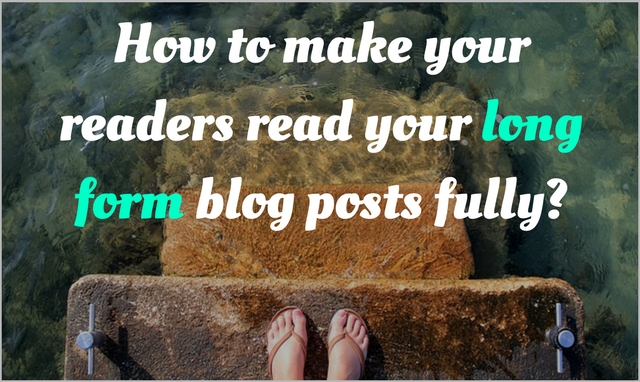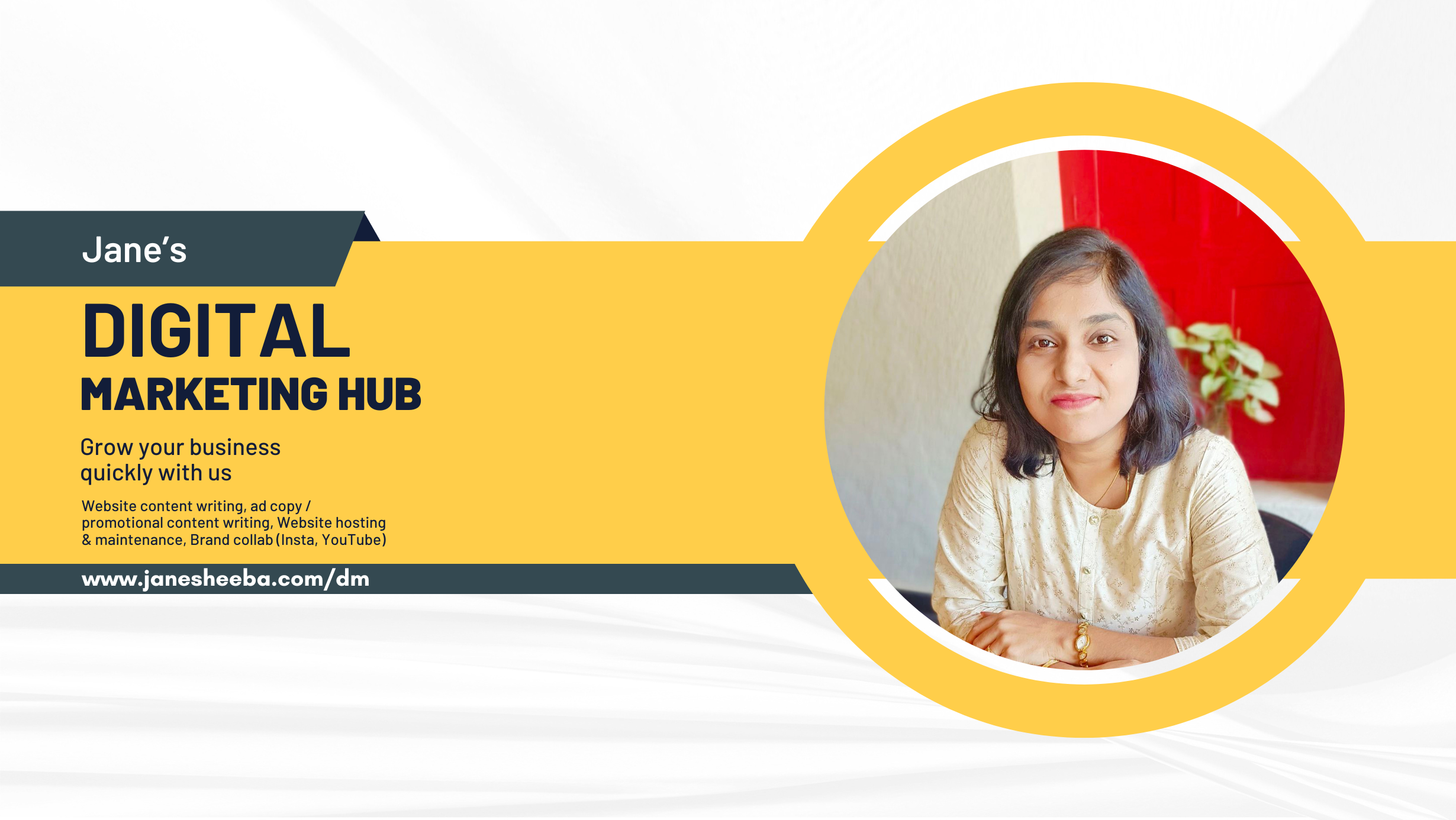
Creating and publishing (long form) blog content is one part of the story.
The other part you should actually pay close attention to is how well your readers take your blog posts!
Do they click on your links? Do they check out your social media updates and do they find it to be interesting?
Do they share your blog posts? Do they leave a comment?
Do they read through your blog posts? Or do they just skim and leave?
These are the things you have to pay attention to after you have published a blog post.
But the thing is you cannot “worry” about how well your readers take your blog post after publishing it.
You should start thinking about even before publishing your blog post – to be precise, even before writing it.
You should do all that you can to get everything right before you publish so that after you publish your content, people read it fully.
“You should do all that you can” – so, what can you do to make people read your long form blog posts fully?
[clickToTweet tweet=”What should you do to make your readers read your long form content fully?” quote=”What should you do to make your readers read your long form content fully?” theme=”style3″]I’ll share.
Write easily digestible posts
When something is hard, people ignore it. Especially on the internet, people want things to be easy, light (yet, attractive), and give them fast results.
They are not ready to spend time on understanding something that’s quite complex.
If someone else can explain the same thing much easier (than you), then your readers will prefer that someone instead of yours.
The concept could be the same, the tips could be the same – yet, if it is hard to digest on your site and if someone else explains it easier, people will prefer that.
So how can you make your post easily digestible? Talk in plain, simple language.
This is highly important.
No matter how much of an expert you are on the topic, you should expect your reader to be a dummy on the topic – which is why you are creating that piece of content in the first place, right?
If your reader is an expert, he/she will not need to read that piece of content, right?
So get plain, simple. Explain everything in as much detail as you can.
Avoid jargons or industry words – if you have to use such words, introduce them in the post.
Here’s an example of a jargon loaded paragraph:

Explain complex concepts by breaking them down, adding appropriate screenshots or explanatory images, or show them how to do stuff in a video.
Here’s a tutorial that explains how to bake a cake from scratch and the author does a very good job of explaining stuff pictorially:

Rather than simply explaining the steps in text, this pictorial representation helps make the content much easily digestible.
When the reader is trying out this recipe at home, he/she can check out how his own progress matches with that explained in the post, right?
Break up content into small paragraphs
You could be speaking in plain simple language. But if your blog post is visually too much to digest, again, people will ignore it.
How can your content be too much to digest, when you are talking simple language?
Well, it is not enough if you speak simple language, but you have to present it in a simple way – visually.
As I said, adding images, screenshots or videos matter a lot.
But even if you do that, breaking your content into small, digestible paragraphs matter a lot.
Here’s an example of a boring, long paragraph:

No matter how much useful information is there on that piece of content, it is highly hard for people to keep the attention throughout such a long paragraph.
You have to split the bunch of sentences into paragraphs. Make them short. Easy to digest.
Something like this:

Use eye-catching images (videos or slides) when screenshots are out of question
I’ve already talked about adding screenshots. But what if your blog post explains a theory or something concrete that doesn’t need a screenshot?
Even if your blog post is a kind of post that won’t fit in a screenshot, try adding engaging images to make it eye-catching, entertaining.
Also adding such images provide a break to your readers from reading the text.
Embedding accompanying videos, or slides is also a great idea!
Here’s an example (from this post):

Use varying patterns (quotes, highlights, etc.)
Just text – plain text – won’t cut it (even if you break it into small paragraphs). You have to add variety (apart from images, and screenshots).
So what can you add?
You can add supporting quotes.

You can highlight certain important parts of text – like using italics, bold, underline.
You can add tweetables.

You can add bullet points.
You can add content in standalone boxes.
Here’s an example of bullet points in a content box:

Taking the pattern from plain text to variety matters a lot!
Use sub-headings
I cannot emphasise the importance of adding sub-headings to your blog post.
Apart from helping your readers skim your blog post, sub-headings do a lot more!
For one, sub-headings give Google and other search engines an idea about the content you have on site because they are embedded in h2 or h3 title tags.
And this is very important for SEO.
The keywords and phrases you include in your sub-headings count and they help you rank for long tail keywords.
And I’m not simply talking about SEO and ranking here.
The more your search engine visibility is, the better your chances are to be found out by the right people. So in turn this helps your readers find your content.
And if your readers like to skim the main points, having sub-headings helps.
But you want your readers to read your full posts, right? So can you avoid sub-headings?
Nope! That won’t work.
Having interesting, and important sub-headings will make your readers read your full blog posts.
Here’s a wonderful post that helps you write sub-headings that work.
Present long form blog posts like a pro
What if you have super long blog posts?
Can you simply choose to write short blog posts just because you are afraid people will jump off the wagon?
It is true that people have a very short attention span, especially on the internet.
But that doesn’t mean you should avoid writing long form content.
In fact, you should be writing quite some (in fact a lot of, if you can) long form content as it boosts your search engine rankings, makes your blog highly useful for your readers and so on.
So how do you make your readers stick to your long form blog post?
[clickToTweet tweet=”The essential tips you need to make your readers read your long form content fully” quote=”The essential tips you need to make your readers read your long form content fully” theme=”style3″]Apply all these above-mentioned tips. Plus, if appropriate add a table of content at the beginning of the post if that’s appropriate.
You can also add a compact cheatsheet or some form of downloadable content that can accompany your blog post.
This will help your readers make use of your content fully!
Ready to try these tips out? Go ahead and implement them in your long form blog posts (and regular blog posts too).







Hi Jane,
Good to read from you again after a long while. I’ve been away for a few months. But here I am, I’m back.
Yes, long form content does not only make one look like an expert for their audience because it shows that the blogger took ample time to organize the content, but it also makes Google value your post more.
However, here’s the headache I’m glad you pointed at, if your post is not interesting (like having 500 words in one paragraph), the long form strategy will become your worse nightmare.
Bit-sized paragraph is what’s trending now. I use it on my blohs and since then, my bounce rate reduced drastically.
Emenike
Hey Emenike,
Glad to see you here! Long form posts are hard to create. But it can be harder for your readers to read it if not presented properly!
Glad to know you have managed to reduce your blog’s bounce rate!
Thanks for stopping by.
Cheers,
Jane.
Hi Jane,
Good to read from you again after a long while. I’ve been away for a few months. But here I am, I’m back.
Yes, long form content does not only make one look like an expert for their audience because it shows that the blogger took ample time to organize the content, but it also makes Google value your post more.
However, here’s the headache I’m glad you pointed at, if your post is not interesting (like having 500 words in one paragraph), the long form strategy will become your worse nightmare.
Bit-sized paragraph is what’s trending now. I use it on my blohs and since then, my bounce rate reduced drastically.
Emenike
Hey Emenike,
Glad to see you here! Long form posts are hard to create. But it can be harder for your readers to read it if not presented properly!
Glad to know you have managed to reduce your blog’s bounce rate!
Thanks for stopping by.
Cheers,
Jane.
Hi Jane,
Again really a nice one today. Breaking up contents, highlighting images and contents, were all nice points to read.
I have shared your post too. I follow all your blog post and implement your ideas on my blog not having improvements.
It’s all because of you, thanks a lot
Hey Mohana,
Thanks for stopping by to leave a comment and also for sharing the post.
I am glad my content helps you 🙂
Cheers,
Jane.
Hi Jane,
Again really a nice one today. Breaking up contents, highlighting images and contents, were all nice points to read.
I have shared your post too. I follow all your blog post and implement your ideas on my blog not having improvements.
It’s all because of you, thanks a lot
Hey Mohana,
Thanks for stopping by to leave a comment and also for sharing the post.
I am glad my content helps you 🙂
Cheers,
Jane.
Hi Jane, how are you?
I’m so glad you wrote about this because, as bloggers, we have to write long-form content in order to stand out and succeed.
But I have noticed some bloggers still don’t understand how to write long-form content that doesn’t put the reader to sleep, or worst still, turns the reader away.
All of the points you’ve made in your post are strong, I especially agree with making content readable by avoiding using jargon words and technical phrases.
One of the features I love in the Yoast plugin is the readability score. It’s very useful for writing content that easy to read and not too complex wither.
In this day and age, we have access to a whole bunch of writing tools and resources. We don’t need to write boring linear content anymore.
Again, great read here, thanks for bringing this topic up.
Have a great weekend – Fabrizio
Hey Fabz,
Jargons can be annoying if you came to a page to get information and everything sounds too alien. You are right – we have got tools and resources that are visually appealing and entertaining. So plain boring long content is so outdated.
Thanks for stopping by! Have a wonderful weekend!
Jane.
Hi Jane, how are you?
I’m so glad you wrote about this because, as bloggers, we have to write long-form content in order to stand out and succeed.
But I have noticed some bloggers still don’t understand how to write long-form content that doesn’t put the reader to sleep, or worst still, turns the reader away.
All of the points you’ve made in your post are strong, I especially agree with making content readable by avoiding using jargon words and technical phrases.
One of the features I love in the Yoast plugin is the readability score. It’s very useful for writing content that easy to read and not too complex wither.
In this day and age, we have access to a whole bunch of writing tools and resources. We don’t need to write boring linear content anymore.
Again, great read here, thanks for bringing this topic up.
Have a great weekend – Fabrizio
Hey Fabz,
Jargons can be annoying if you came to a page to get information and everything sounds too alien. You are right – we have got tools and resources that are visually appealing and entertaining. So plain boring long content is so outdated.
Thanks for stopping by! Have a wonderful weekend!
Jane.
Jane, great stuff. I do not like reading lenghty paragraphs and have been using less in mine since going with Yoast Premium plugin. They warn you if you go over 300 in any given paragraph.
I do not use many multiple images but a few over a long post do go a long way. It’s the packaging that must look pretty so they can scan if they want or read it word for word.
I know I get bored on a post without any images.
Thanks for the tips!
Hey Lisa,
Nice to know that Yoast Premium has that option – really cool!
You are right – it is all about the packaging. Any in-depth long content can be made entertaining and engaging with the right packaging.
Thanks for stopping by.
Cheers,
Jane.
Jane, great stuff. I do not like reading lenghty paragraphs and have been using less in mine since going with Yoast Premium plugin. They warn you if you go over 300 in any given paragraph.
I do not use many multiple images but a few over a long post do go a long way. It’s the packaging that must look pretty so they can scan if they want or read it word for word.
I know I get bored on a post without any images.
Thanks for the tips!
Hey Lisa,
Nice to know that Yoast Premium has that option – really cool!
You are right – it is all about the packaging. Any in-depth long content can be made entertaining and engaging with the right packaging.
Thanks for stopping by.
Cheers,
Jane.
Hi Jane!
Most of the time, I can’t stop myself writing lengthy posts, but always follow your advise not write lengthy paragraphs. And If required, I use multiple images too. Like ever, your this post is also genuinely helpful.
Thanks for the tips!
Sushil Kumar Saini
Glad to hear that Sushil. Thanks for stopping by to leave a nice comment 🙂
Cheers,
Jane.
Hi Jane!
Most of the time, I can’t stop myself writing lengthy posts, but always follow your advise not write lengthy paragraphs. And If required, I use multiple images too. Like ever, your this post is also genuinely helpful.
Thanks for the tips!
Sushil Kumar Saini
Glad to hear that Sushil. Thanks for stopping by to leave a nice comment 🙂
Cheers,
Jane.
Hi Jane,
Writing a long blog post can make people want to skim through unless they abide by those wonderful examples you have given us. Break down the paragraphs, use bullet points, put in a few images, etc.
Whenever I read a blog post that is not broken up, my eyes start to glaze over it and my mind goes on something else.
As Fabrizio mentioned I too like using Yoast, not only for SEO purposes but also for the “readability.”
-Donna
Hey Donna,
Yes – I can relate to eyes glazing over and mind wandering! After all, we are all human beings. Which is why we need elements of variation to engage our readers and stop their minds from wandering off our content 🙂
Thanks for stopping by.
Cheers,
Jane.
Hi Jane,
Writing a long blog post can make people want to skim through unless they abide by those wonderful examples you have given us. Break down the paragraphs, use bullet points, put in a few images, etc.
Whenever I read a blog post that is not broken up, my eyes start to glaze over it and my mind goes on something else.
As Fabrizio mentioned I too like using Yoast, not only for SEO purposes but also for the “readability.”
-Donna
Hey Donna,
Yes – I can relate to eyes glazing over and mind wandering! After all, we are all human beings. Which is why we need elements of variation to engage our readers and stop their minds from wandering off our content 🙂
Thanks for stopping by.
Cheers,
Jane.
Hi Jane,
I make my posts scannable, short and punchy, even if the length is a few K words or longer. Ditto on Fabz and Donna’s take; gotta have Yoast in place. SEO is one benefit. But the little thing helps you create readable posts able to be scanned so folks can process the entire piece of work quickly and easily. We read like following a typewriter, not like we are processing one massive block of text.
Thanks for sharing 🙂
Ryan
Hey Ryan,
Good to know many are using Yoast’s readability feature. That’s really awesome.
Short punchy line make reading a lot easier and straightforward.
Thanks for stopping by.
Cheers,
Jane.
Hi Jane,
I make my posts scannable, short and punchy, even if the length is a few K words or longer. Ditto on Fabz and Donna’s take; gotta have Yoast in place. SEO is one benefit. But the little thing helps you create readable posts able to be scanned so folks can process the entire piece of work quickly and easily. We read like following a typewriter, not like we are processing one massive block of text.
Thanks for sharing 🙂
Ryan
Hey Ryan,
Good to know many are using Yoast’s readability feature. That’s really awesome.
Short punchy line make reading a lot easier and straightforward.
Thanks for stopping by.
Cheers,
Jane.
Hi Jane,
With all the Google changes and everything that’s changed with blogging, long form content is the way to go. While I really don’t sit there and focus on the number of words for each and every blog.
I can honestly say that all my posts are over 1,000 words long. Maybe, a few of them fall below that.
I actually prefer to read long form blog posts. What I usually do when I first stumble upon the post is I’ll skim it to read the headings.
If it’s eye catching and I feel like I can learn something then I will scroll back to the top and read the entire post.
I have personally found that longer posts teach me a lot more than shorter posts. Of course it depends on the subject. You also don’t want to add a bunch of filler words just to make your word count higher.
As a blogger, it’s important to pay attention to what keeps readers on your blog longer. Thanks for sharing these tips, I know that they will help so many people improve their writing.
Have a great day 🙂
Susan
Hey Susan,
Just like you, I too first skim the sub-headings to see if I can get anything new from the post. If the headings are interesting I dive in.
Which is why it is highly crucial to make the headings awesome too.
I always tell my clients that it is not about the word count – the meat and the way it is packaged are the keys!
Thanks for the awesome comment.
Cheers,
Jane.
Hi Jane,
With all the Google changes and everything that’s changed with blogging, long form content is the way to go. While I really don’t sit there and focus on the number of words for each and every blog.
I can honestly say that all my posts are over 1,000 words long. Maybe, a few of them fall below that.
I actually prefer to read long form blog posts. What I usually do when I first stumble upon the post is I’ll skim it to read the headings.
If it’s eye catching and I feel like I can learn something then I will scroll back to the top and read the entire post.
I have personally found that longer posts teach me a lot more than shorter posts. Of course it depends on the subject. You also don’t want to add a bunch of filler words just to make your word count higher.
As a blogger, it’s important to pay attention to what keeps readers on your blog longer. Thanks for sharing these tips, I know that they will help so many people improve their writing.
Have a great day 🙂
Susan
Hey Susan,
Just like you, I too first skim the sub-headings to see if I can get anything new from the post. If the headings are interesting I dive in.
Which is why it is highly crucial to make the headings awesome too.
I always tell my clients that it is not about the word count – the meat and the way it is packaged are the keys!
Thanks for the awesome comment.
Cheers,
Jane.
Hi Jane , Besides all these useful tips I would like to recommend a plugin for all the bloggers so that it could show table of contents to your probable reader.
Hi Jane , Besides all these useful tips I would like to recommend a plugin for all the bloggers so that it could show table of contents to your probable reader.